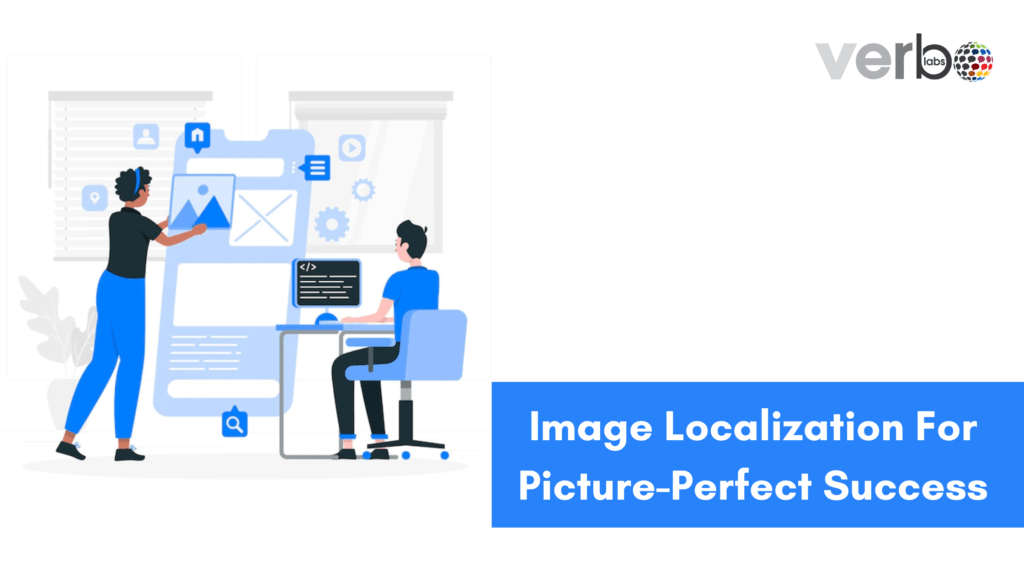Before indulging in the topic, we should first understand what image localization means. If you understand your localization needs, it can appear immense and complex. There are many websites giving suggestions, tips, services, and strategies to serve you in trying to increase your market value globally. Nonetheless, before trying to ask for outside support, you must execute the majority of localization attempts internally following the organization or team. This simply means that you can initiate your journey in the right way, without any need for external capital costs or resources. Here, we will start with some key image localization elements:
What exactly is image localization and how does it function?
Localization in any company improves your business image by personalizing it to the domestic culture of the target audience. In this way, you can build a relationship with potential customers and obtain their trust, promising them to interact with your company longer. Ensure that your consumers see a steady brand image so that your company’s identity will not be compromised. Moreover, image localization can assist in the exhibiting of applications that are adapted to your clients’ choice in various locations. You can get more favorable responses from your website or app users using this approach. As an outcome of these positive views, customers will be able to believe your organization and purchase the products/services.
Is this mandatory to localize your image?
Should you localize your graphics and images as part of your organization’s website localization approach? Why would you dedicate your additional resources and time to such a time-consuming job? Is the essential return on investment going to be reachable by your company? How many of your challengers are doing it as well? Will it be worthwhile for your target audience? Will it result in higher market shares? These are some of the challenges that you’ll need to examine as you develop to localize your organization’s website.
This is not always easy to counter the issues, no matter how basic they appear. You must find and examine a variety of various websites, ask the appropriate queries, process the data, and come up with a complete study to truly catch what would be great for your target audience. You need to start by evaluating and identifying primary success factors for website localization that would serve you in reaching your international goals. Afterward, you will have to think about best practices in website navigation to see how localized images use the navigation features to convey their aimed audience. This is critical to understand why you think about translating your images and graphics. Regardless of the reason, you should keep in mind that the website localization strategy is usually driven by branding objectives. Translating visuals and images is just a single part of a larger strategy for remaining ahead of the competition in the international market.
The importance of translating and localizing images
People are generally drawn to images, and our digital audience is almost exclusively based on them. However, your immersive vivid approach will be conditioned by your own culture and experiences, and the same penetration might not work in other countries. While task statements and basic principles are essential, the images and localization you choose to enact your company’s identity will always be identified by clients and customers. The product or service might have a difficult time selling in foreign markets if it has a high-quality localization but images that your clients can’t relate to.
Image Localization Research Methodology
A thorough understanding of the culture into which you are translating is required for effective image localization. The kind of image to help or avoid will be determined by determining the features that a culture considers appropriate. For instance, the collective audience will favorably counter images of people together. On the other hand, different audiences will handle images that illustrate a single individual, as this option highlights individuality.
Pick global concepts
After investigating, the next option in localizing images is to establish a rule for a company’s image. One should develop a list of necessities for your products and visuals, which can be used as a guide for future campaigns. Of course, as localization could be a great option, the images you create should be crafted to be effectively localized. This point rationalizes the whole localization process by establishing a plot line from which you can manage. One significant rule is to use the usual visuals that will be acknowledged in any culture. This guideline is a great point to start reaching cultural assent before you start localizing or translating your images.
What goes into image localization?
As with website localization, software localization can become a constant process now that, as a modern organization with a grown-up digital impression, your company’s website is not stable. This may improve with a blog segment where the respective new post will need localization, or a resource area of portfolio matter or case studies sent to potential leads. Or simply new web pages for rising value in markets and/or services, or probabilistic even new sectors and industries for your business. Localization is essential for images and visuals as well. Image localization plays a vital role in the whole process of attaining a larger audience.
Using images, visuals, and graphics in web design and related substantial material can go much deeper than searching for an adequately neutral inventory photo. During the localization procedure, this might also be an excellent idea to improve your marketing strategy by using visuals, images, and graphics in the whole process, as well as produce any desktop publishing operation implicated better and more efficiently for future localization attempts. It is a splendid opportunity to leverage everything related to localization and translation. For example, it has been shown that large-prominent images attract attention better than headlines, so when the title of the article is placed above the image, it might be forgotten because the eye explores from top to bottom. From the audience’s point of view, they have already been pulled toward the image; their next feeling is to examine what’s below it.
There are some key factors to test when improving the localization of the image:
1. The text can be used within the featured images and then use the same layout—this action raises your elevation slightly because each newly edited text-loaded image requires multi-language editions of both image and text.
2. To promote user experience and a good layout, simply place the heading below the highlighted images.
3. To avoid using substantial images and to undertake some other strategy—the planning may decrease your overload in the long run.
However, you must determine whether the actions you take in image localization are yielding the desired results and how much they interfere with your marketing texting efforts. Another aspect of upgrading the use of images is the creative and localization processes connected with them. They have uniformity. If this is your first time introducing a multilingual website, then there is no need to worry about getting the results. You can follow the guidelines such as switching to better website translation services, localization of images, and software localization services. Thus, you will draw the audience to your multilingual website through the localization of images. You can easily find the 10 best localization companies across the globe. All you need to do is to find the best localization service, providers



